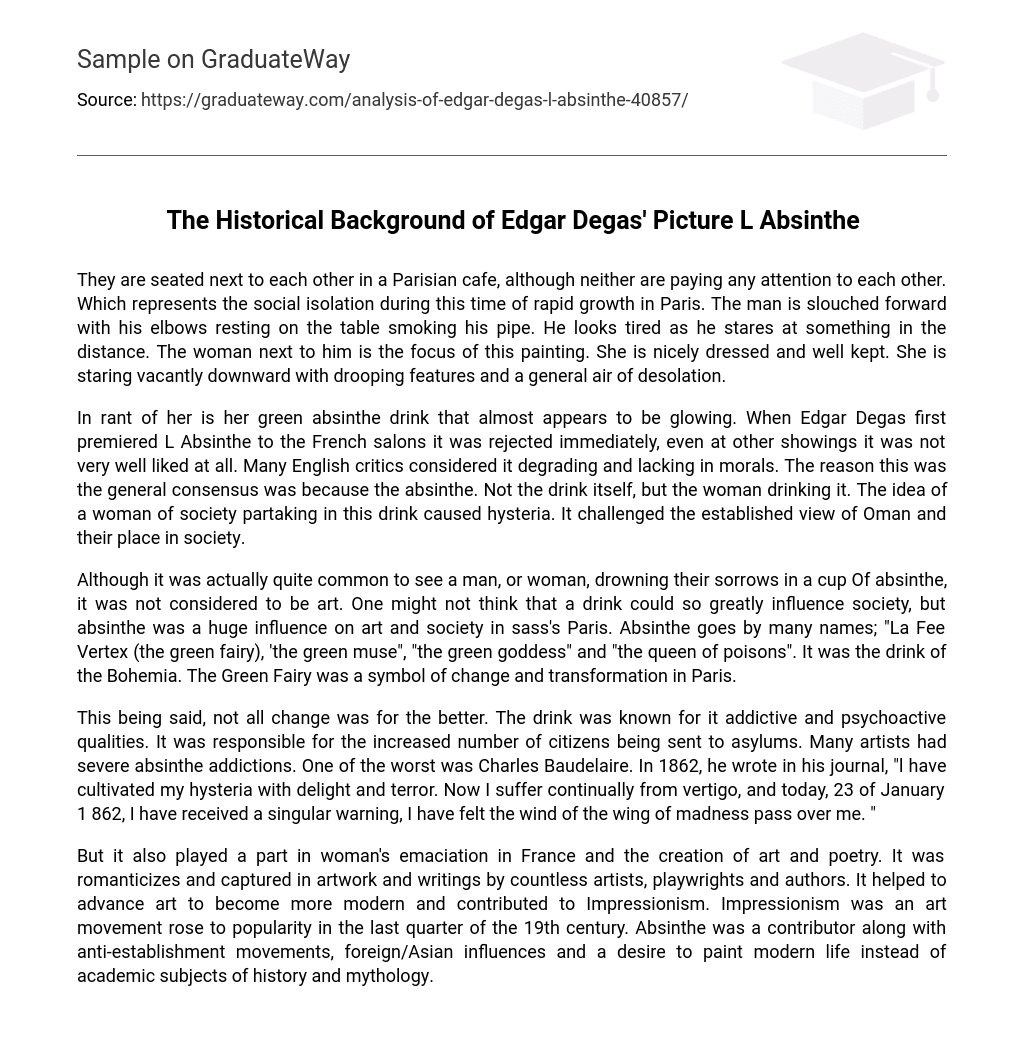Seated in a Parisian cafe, the man and woman are both oblivious to each other, illustrating the social isolation amidst the city’s rapid growth. The man slouches at the table, smoking his pipe, appearing weary as his gaze fixates on some distant object. The woman beside him is the central figure in this artwork, dressed elegantly and maintaining a groomed appearance. Her gaze aimlessly focuses downward, her face displaying a sense of despair and overall desolation.
Displayed in front of her is a vivid green absinthe beverage that seemingly emits a radiant glow. Edgar Degas faced immediate rejection when he initially introduced L Absinthe to the French salons, and subsequent showings did not fare much better in terms of public reception. Numerous English critics found it disparaging and devoid of ethical principles. The prevailing notion behind this collective opinion was not merely the presence of absinthe, but rather the woman consuming it. The act of a lady from high society indulging in this beverage caused an uproar, challenging conventional views on women and their societal roles.
Although drinking absinthe to drown one’s sorrows was quite common, it was not regarded as an art form. Surprisingly, this beverage had a profound impact on both art and society in Paris during the 1900s. Known by various names such as “La Fee Vertex,” “the green muse,” “the green goddess,” and “the queen of poisons,” absinthe became synonymous with the Bohemian lifestyle. The Green Fairy symbolized change and transformation in the bustling city of Paris.
Not all change was positive, as the drink known for its addictive and psychoactive effects resulted in more individuals being sent to asylums. Numerous artists, including Charles Baudelaire, suffered from severe absinthe addictions. In his journal entry on January 23, 1862, Baudelaire expressed the enduring consequences he faced: “I have cultivated my hysteria with delight and terror. Now I suffer continually from vertigo, and today, I have received a singular warning, I have felt the wind of the wing of madness pass over me.”
Despite its negative effects on women in France and contribution to the thinning of their figures, absinthe also had a significant impact on the development of art and poetry. Numerous artists, playwrights, and authors incorporated it into their artwork and writings, often portraying it in a romanticized manner. This artistic fascination with absinthe played a crucial role in advancing modern art and fueling the rise of Impressionism during the late 19th century. However, it is important to note that absinthe was just one element among various anti-establishment movements, foreign/Asian influences, and an inclination towards painting contemporary life rather than traditional historical or mythological subjects.





